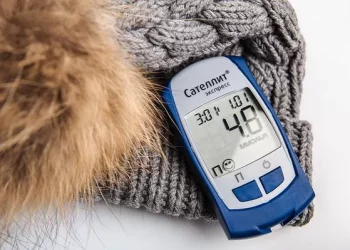Despite significant contributions from the pharmaceutical industry, millions of children and young people with type 1 diabetes (T1D) in low- and middle-income countries (LMICs) continue to struggle with limited and uncertain access to life-saving insulin, a new report by the Access to Medicine Foundation warns.
The report, published on Tuesday, examines 11 industry-led initiatives from the world’s largest insulin producers—Eli Lilly, Sanofi, Novo Nordisk—and biosimilar manufacturer Biocon. These efforts collectively support insulin donations or funding in 71 out of 113 LMICs evaluated.
However, the foundation highlights a critical flaw: these programmes, while essential, are heavily dependent on donations, making long-term access fragile and unsustainable. “Although these contributions are vital, the reliance on industry goodwill breeds uncertainty. Any cutbacks could abruptly sever access for hundreds of thousands of children and young people,” the report cautions.
Most initiatives assessed are temporary by design. Ten of the 11 programmes have defined end dates or specific targets, with several slated to conclude by 2030, further underlining concerns over future availability.
Claudia Martínez, research director at the Access to Medicine Foundation, emphasized that while the pharmaceutical industry plays a key role in addressing access gaps, more durable solutions are urgently needed. “As demand grows, initiatives must evolve beyond short-term fixes to ensure broad, sustainable, and affordable access,” she said.
Insulin’s High Price: A Persistent Barrier
Efforts by companies like Lilly and Novo Nordisk to adapt their models and shift T1D care towards government-run systems are promising, but the report stresses that these attempts will fall short without addressing the core issue of insulin affordability.
Currently, industry initiatives remain the primary, and often only, source of insulin for many children in LMICs. Yet, in 2023, these programmes reached just 8% of the estimated 825,000 children and youth in need across the 71 target countries.
Given the widespread underdiagnosis of diabetes in LMICs, the real gap is likely even larger. While some public health systems cover insulin costs through direct provision or reimbursement, approximately 34% of people in LMICs still bear healthcare expenses out of pocket. In many African countries, individuals must cover the full cost themselves.
“The scale of unmet need is overwhelming,” the report notes. “For those outside the reach of these initiatives, access to essential diabetes care remains unattainable.”
Lagging Behind in Technology and Support
A limited number of initiatives in LMICs have upgraded from basic insulin vials to more advanced insulin analogues and pens, which are easier for children to use and commonplace in wealthier nations. Similarly, access to glucose monitoring devices and other essential diabetes management tools remains scarce.
Some programmes include training for healthcare professionals to address high rates of misdiagnosis and unrecognized T1D cases. Seven of the assessed initiatives offer such training, while Lilly and Novo Nordisk also invest in infrastructure and equipment upgrades.
Sanofi’s “KiDS” initiative stands out as the only programme extending education beyond patients and families to also include teachers and school staff, fostering a broader support network for young diabetics.
The Path Forward: Beyond Donations
To secure long-term insulin access, the report calls on pharmaceutical companies to shift away from donation-dependent models. Instead, they should focus on scaling up availability, ensuring affordability, and tailoring diabetes care products and technologies to the needs of children in LMICs.
“Only by moving towards sustainable, government-owned healthcare solutions can we guarantee that all children and young people, regardless of geography, have reliable access to life-saving diabetes treatment,” the report concludes.
Related topics:
New Study Identifies Key Mechanism Behind Insulin Resistance in Obese Adolescents
Grant Opportunity: Advancing Early Detection in Adult-Onset Type 1 Diabetes


























